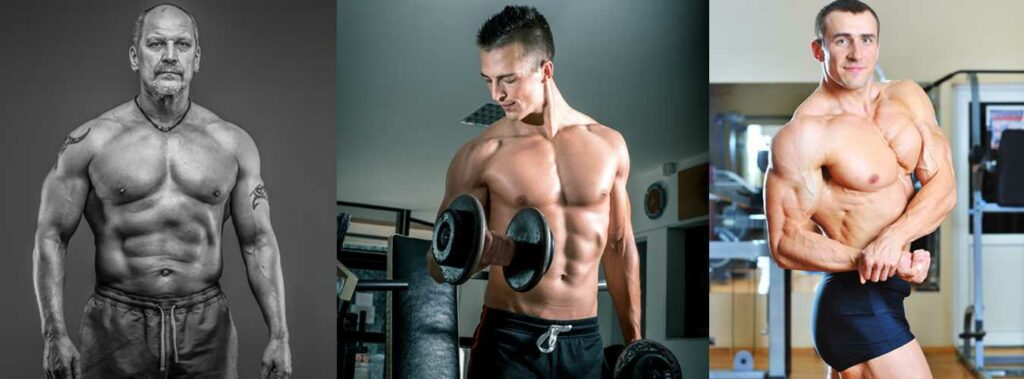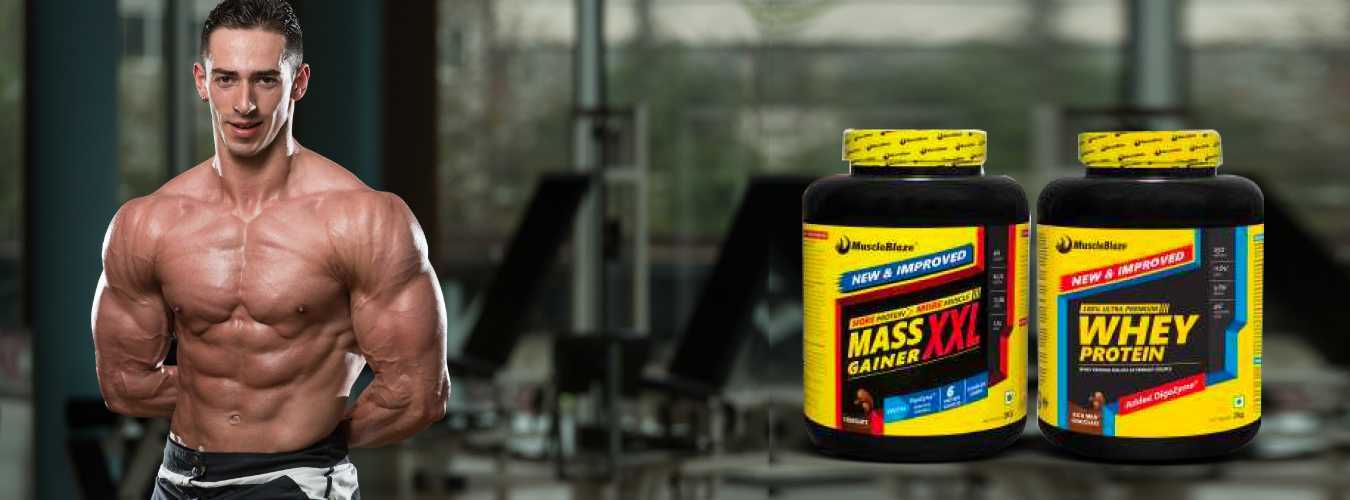What is the Right Age to Build Muscles
1 May 2023
Muscles are biologically active tissues and the good news is that the right age to build muscles is anytime, as long as you persist.

Do you wonder there is a perfect age for bodybuilding? Do you think that unless you are young, specifically in the twenties, it will be hard for you to build muscle. This is not true. The fact is that there is no perfect age to build muscles. Whether you are sixty, forty or younger you have an equal opportunity to flex your muscles as long as you pump the iron and eat healthy. Do you find it hard to believe then take a look at the popular Bollywood icons? Hrithik, Shahrukh, and Aamir have painstakingly sculpted their bodies, irrespective of their age. The basic rules for muscle building remain the same, the only difference may show in the pace of the gains. Generally, it is believed that with age your progress slows down, but it is not always true. University of Oklahoma researchers compared people of different ages who followed an exactly same program for eight weeks. They found that guys between 35 and 50 years built more muscle than the young college going men. For middle-aged men, the muscle gains were 1.13 kg, whereas for the college going men it was 0.9kg.

WHAT FACTORS AFFECT MUSCLE GROWTH
Age is not a barrier to building muscle mass. As long as you pump iron hard enough to challenge your muscle tissues, eat clean and healthy and get ample rest, which allows growth hormones to do their job, building muscles should not be a challenge. Still, once you are past thirty, you tend to lose muscle mass and you need to work a way out to arrest the muscle loss and build new muscle tissues. The factors that affect muscle growth for all ages are:
1. Start young
Late teens and early twenties are the perfect age to start bodybuilding. Puberty and bodybuilding are closely related because this is the fastest time for muscle growth. Between, 17-25, you will experience testosterone driven growth burst in your muscles. However, you need to be moderate with your workouts and its intensity. Follow the 10 percent rule and raise the intensity by one-tenth at a time, so that your body gets ample stimulus to grow. However, this does not mean that you will not grow bigger after you have crossed this age, only the pace slows down a bit.
2. Are you training for the first time?
If you pick up the iron after leading a sedentary life for a while, you recruit new muscle fibers which strengthen your muscle tissues and make them stronger and more visible. In the first 12 weeks, it is not uncommon to see 10, 20 or 30 percent increase in strength. In the first three months of training, you will burn fat at a higher rate and your muscle tissues will pull in water and swell in size.
3. Remain consistent in your efforts
Slow and steady wins the race, actually, builds the muscle. Do not train insane. You might risk an injury and it will make it difficult for you to lift heavy till you recover. Inactivity will result in the loss of your hard-earned muscle. Therefore, train consistently and reasonably. Perform lunges, squats and exercises that work your quad muscles, hamstrings. Be sure that resistance levels and the number of reps are high enough to fatigue your muscle tissues. ACSM recommends 8-12 reps for each exercise
4. Alternate muscle groups
Exercises such as a squat, bicep curl and bench press give you the best return for your time and energy, burning more calories and addressing more muscles. When you weight train, your muscle tissues suffer from microscopic injuries that get rebuilt with protein rich diet and adequate rest. Until you allow your muscles to rest enough, you cannot rebuild those.
The ACSM recommends a three-day split as follows:
- Day one: Chest, triceps, and shoulders
- Day two: Lower body (quads, hamstrings, gluteals, hip abductors, and calves)
- Day three: back, biceps and abs
5. Do you drink enough water?
Your muscles are more than 70 percent water. When you challenge your muscles during resistance training, they contract. During this contraction, water is driven from the blood into muscle cells and surrounding areas that make those muscles swell
The American College of Sports Medicine recommendation on water intake:
- Before exercise: 600ml (1 tall glass) of water
- 1 hour of workout requires at least 1200ml (2 tall glasses) of water for proper hydration.
6. Get ample protein
Your muscles are made of protein. In the absence of adequate protein, your body will not be able to synthesise new muscle tissues. The rule of thumb in bodybuilding has been for years 2.2g/ kg of bodyweight for decades. By this rule, your protein allowance will be as follows per day
Body weight ( Kg) Protein Need
| 60 | 132g |
| 65 | 143g |
| 70 | 154g |
| 75 | 165g |
| 80 | 176g |
Not only should you focus on your protein intake, but also on the quality of the protein. The availability of essential amino acids is a marker of protein quality. Your body does not synthesize essential amino acids, which are required for muscle growth. Protein Digestibility Corrected Amino Acid Score is a method of evaluation the protein quality based on the amino acid requirement of human beings and their ability to digest it.
The score of 1.0 is the highest score given to a protein source.
Both whey and casein (milk based protein) enjoy 1.0 score. Whey is a good source of leucine, a Branched Chain Amino Acid integral for muscle recovery. So does egg white. For vegetarians, good protein sources are legumes, whole wheat, peanuts, black beans, chickpeas.
If you are on the right side of 30, or more, your protein intake needs to increase further, because post 30, you will notice a decline in your muscle mass.
7. Remain injury free
Have you wondered why middle aged folks stay away from vigorous weight lifting? Are they lazy or they have an injury? As you age, your joints lose flexibility and become susceptible to injuries. A slight knee strain would not have prevented you from working out in your twenties, but in your thirties, it will. Ultimately, this will result in muscle loss. To remain injury-free, you need to take frequent deloads. A deload is a light block of training, where you lift but with a reduced intensity.
8. Add cardio to your workout schedule
Cardio for muscle building? You might be surprised, but this is true. Moderate cardio increases blood flow to your muscle tissues which helps your body repair muscle damage quickly. Cardio is good for your cardiovascular system which benefits anyone.
9. Get the right supplements
Supplements can fill in the dietary gaps and give you a muscle-building edge. A whey protein shake remains a must after your workout to provide immediate nutrition to your muscle tissues, irrespective of your age. A fish oil supplement or flaxseed supplement for vegetarians provides essential omega 3 fatty acids, which keeps your joints limber and active. If you are looking to fill out mass gainers will help you add the necessary bulk.
10. Train with a trainer
If you wish to build muscle at any age, you need to seek the help of a trainer who has experience in training mature individuals, so that s/he can customize your training and diet plan to help you accomplish your goal. Every six weeks, your trainer will change your program so your muscles do not get complacent and you overcome the growth plateau.
Are you still thinking, what’s the right age to build muscles? Well, the verdict is that if you are younger than 25, take advantage of the opportunity to build your muscles at a faster pace, but once you reach 30 and beyond, you can still build your muscle with the right type of training. Also, provide your body adequate nutrition, a careful balance of carbohydrates, fats and proteins as well as vitamins and minerals. You should eat five to six small meals in a day and work outright. Fill in the gaps with supplements and be kind to yourself. The results will surprise you as well as the rest of the world.









 100% Safe & Secure payments:
100% Safe & Secure payments:




